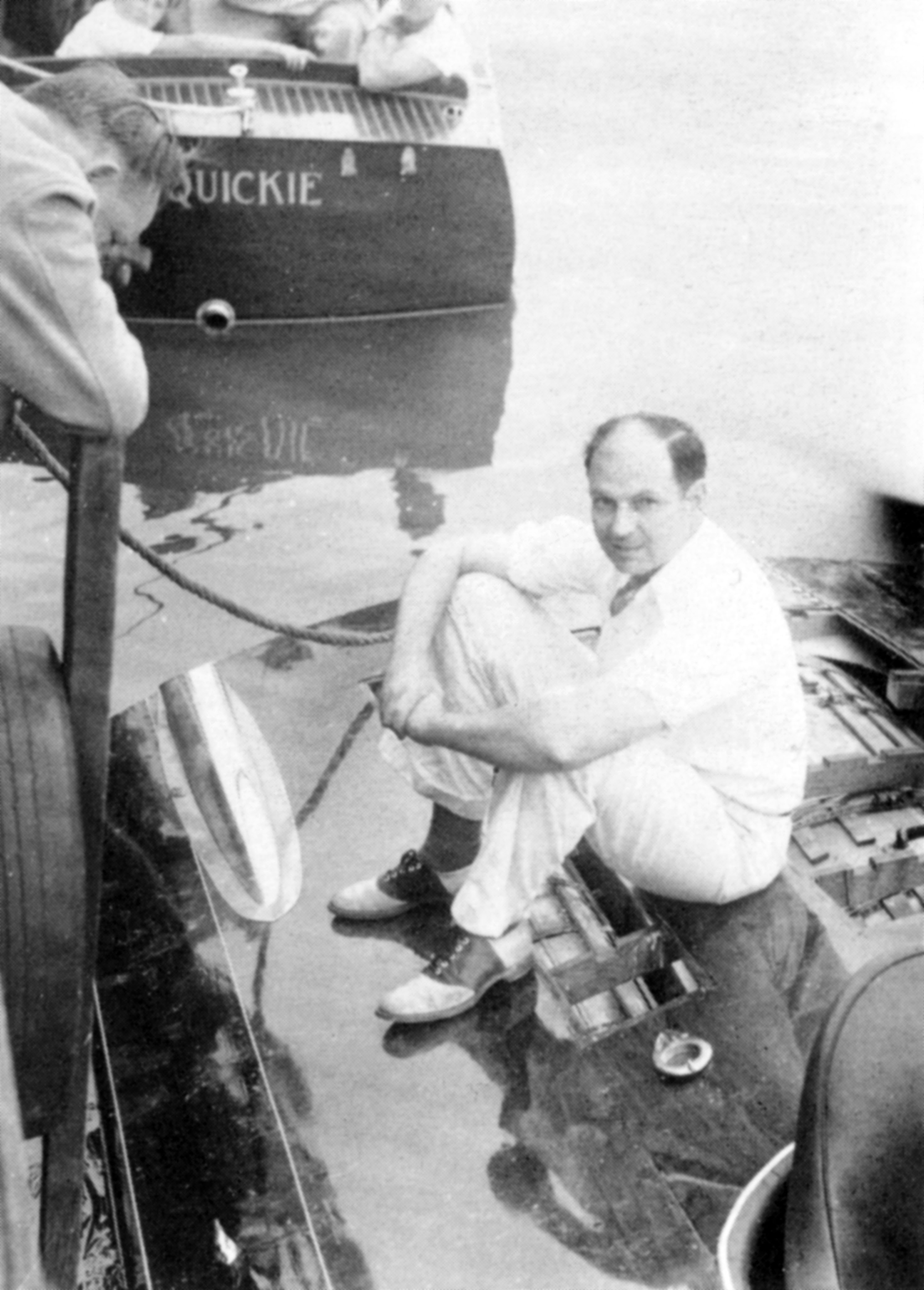Douglas Van Patten
C. Douglas Van Patten, N.A. ( a biographical sketch)

How does one capture upon a single page the brilliant career of a star whose light still illuminates the universe of boating after some 45 years of prominence! A native of Detroit, Professor Van Patten received his B.S. in mechanical engineering from Columbia in 1933; and did post graduate work there in hydrodynamics.
He served an extensive apprenticeship in the late twenties by signing on with George W. Crouch, N.A., a legend in naval architecture. In 1933, he became a consulting mechanical engineer for William O. Smith and Associates.
Eddy Marine Corp. of Bay City hired him in 1935 as its chief naval architect, where he designed the "Eddy AquaFlow" a 19 ft. runabout powered by a Ford V-8, V-drive.
In 1937, he was persuaded to join Greavette Boats, Ltd. of Gravenhurst,[1] Ontario as its chief naval architect. While there, he designed the "Streamliner" and the "Sheerliner" models, which were built and sold for 38 and 29 years respectively. He even invented a machine which carved round planking from stock materials to make their production possible.
In 1939, Van Patten moved a few miles to the north, and became the designer for Minett-Shields in Bracebridge Falls, staying there some five years.
Before leaving Greavette in 1939, he did some custom racing boat design for Ernest and Harold Wilson of Port Carling, first by a redesign of Miss Canada II, with the permission of its original designer, John L. Hacker, N.A. Van Patten succeeded in solving a serious "porpoising" problem, but was given less than a week to modify the boat and put it in top racing condition for the 1937 Gold Cup. During the race, owing to the haste in construction, the boat gradually came apart, but sufficiently demonstrated Van Patten's design concept as sound. After advising the Wilsons that the better course would be to build a new boat, in November of 1937, he began his design of Miss Canada III. This unique 24½ ft, hull integrates a double concave unevenly spaced set of steps on its bottom (later dubbed "keel knuckle" steps), which gives it exceptional direction and turning stability, even in rough water. This design also resulted in low specific drag upon the wetted surface, giving it an optimum running attitude, the concept having evolved as early as 1929 from Van Patten's experiments with models.
The curved deck also produces an aero dynamic lift which lightens the hull at its center of gravity, enabling a quick change of trim without stalling, and thus increases its maneuverability.
Her original power was a Miller V-12, 728 cu. in. engine which produced 800 H.P. at 5,000 RPMs, being the first such engine built bw Harry Miller, the mechanical genius.
After leading the 1939 Gold Cup, Miss Canada III sheared off the shaft to the oil scavenger pump, putting it out of the race. After replacement with a bigger shaft, she went on to win the President's Cup that year and also High Point Champion, along with a host of other victories, which included the Canadian National Championship, the National Sweepstakes and two Silver Cups. Running with her Miller engine (predecessor to the Offenhauser), she bettered 122 MPH, and set a Gold Cup straight-away record at 119 MPH. In 1946, running with a Rolls Merlin and an unblocked throttle, she bettered 133 MPH.
In late 1948 and early 1949, Van Patten was commissioned by the Wilsons to design Miss Canada IV when they decided to challenge for the Harmsworth International Trophy. A special exemption ruling by the Harmsworth Trustees was necessary to permit Van Patten's participation and the use of British engines. The new hull was a husky 31 ft. version of the III and sported a Rolls Griffon capable of 2850 H.P., using aneroid controls and a two-speed two-phase supercharger having an automatic shift. She bettered 140 MPH in the time trials held on Decoration Day, 1949 at Detroit, but supercharger problems forced her back to third. After setting a North American speed record of 138.6 MPH, a Rotol-made stainless steel prop boosted her to speeds into the 170 MPH range. In September of 1949, at the Bay of Quinte, the Wilsons, assisted by Van Patten, attempted a world water speed record. In the first measured mile, Miss Canada IV averaged 183 MPH; and on the return trip, through the first half mile, averaged better than 190 MPH, when the gear box located at Wilson's feet heated up and exploded through the deck. That experience and the demand by Rolls-Royce for a return of their engines forced the Wilson family out of boat racing.
During World War II, Van Patten was "loaned" to the Canadian Government, the British Admiralty, the Dutch Government and the United States Navy Department, primarily as a trouble shooter on design, steering and propulsion problems. He designed for Canada a Hall-Scott powered torpedo boat capable of 41 knots, which easily outran the United States Navy P. T. boat, despite the latter's Packard V-12 power.
In 1964, he designed what was then the world's largest boat, the Beatrice, a 1200 ft. diesel-electric launch which cruised the Amazon River for the Delgado Line.
Still active in marine design, C. Douglas Van Patten resides in Flint, Michigan with his wife, Bethany. His son, Charles, is currently writing his father's biography. His daughter, Diana Van Patten Webb, is the wife of Jervis Webb, President of a Detroit conveyor company.
The Antique and Classic Boat Society is indeed proud to stage in his honor the Fourth Annual Antique Gold Cup Regatta.
[*] President of The Antique & Classic Boat Society, Inc. and originator of the Antique Gold Cup Regatta.
[1] Greavette moved in 1979 to Port Carling, Ontario.
